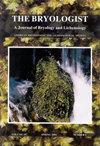Taxonomic reevaluation of the Japanese Marchantia taxa belonging to sect. Papillatae of subg. Chlamidium (Marchantiaceae)
IF 1.5
4区 生物学
Q4 PLANT SCIENCES
引用次数: 5
Abstract
Abstract. The Japanese Marchantia taxa belonging to sect. Papillatae of subg. Chlamidium have been taxonomically ambiguous for a long time because many species and infraspecific taxa have been described based on their broad morphological variation. In order to resolve this taxonomic problem, nearly 200 specimens including type material of names placed in the section were morphologically examined. Among them, 45 specimens collected during our recent field work in Japan were newly sequenced for phylogenetic analysis. The molecular analysis showed that Japanese plants belonging to sect. Papillatae should be partitioned into two distinct clades. The plants belonging to the two clades were distinguishable by the presence or absence of a dark median band on the thallus and the morphology of the appendage of ventral scales and gametangiophores. Geographic distribution and ecological habitats in Japan also support the partitioning into two distinct clades. We propose the new combination M. emarginata subsp. cuneiloba (≡ M. cuneiloba). We also suggest that M. emarginata subsp. cuneiloba and M. papillata subsp. grossibarba are the appropriate names for the plants belonging to each clade. The species previously described from Japan (e.g., M. radiata Horik., M. tosana Steph. and M. tosayamensis Steph.) were synonymized for both of them.日本Marchantia分类群的分类学再评价。亚属的Papillatae。Chlamidium(马钱科)
摘要日本Marchantia分类群属于门。亚属的Papillatae。长期以来,Chlamidium在分类学上一直不明确,因为许多物种和种下分类群都是基于其广泛的形态变异来描述的。为了解决这个分类学问题,对近200个标本进行了形态学检查,其中包括放置在切片中的名称的模式材料。其中,我们最近在日本实地工作期间收集的45个标本被新测序用于系统发育分析。分子分析表明,日本植物属于门。Papillatae应该分为两个不同的分支。属于这两个分支的植物可以通过铊上是否存在深色中间带以及腹侧鳞片和配子血管载体附属物的形态来区分。日本的地理分布和生态栖息地也支持将其划分为两个不同的分支。我们提出了新的组合M.emarginata subsp。cuneiloba。我们还认为,M.emarginata subsp。cuneiloba和乳头分枝杆菌亚种。grossibarba是属于每个分支的植物的合适名称。先前从日本描述的物种(例如M.radiata Horik、M.tosana Stephen和M.tosayamensis Stephen)是它们的同义词。
本文章由计算机程序翻译,如有差异,请以英文原文为准。
求助全文
约1分钟内获得全文
求助全文
来源期刊

Bryologist
生物-植物科学
CiteScore
2.40
自引率
11.10%
发文量
40
审稿时长
>12 weeks
期刊介绍:
The Bryologist is an international journal devoted to all aspects of bryology and lichenology, and we welcome reviews, research papers and short communications from all members of American Bryological and Lichenological Society (ABLS). We also publish lists of current literature, book reviews and news items about members and event. All back issues of the journal are maintained electronically. The first issue of The Bryologist was published in 1898, with the formation of the Society.
Author instructions are available from the journal website and the manuscript submission site, each of which is listed at the ABLS.org website.
All submissions to the journal are subject to at least two peer reviews, and both the reviews and the identities of reviewers are treated confidentially. Reviewers are asked to acknowledge possible conflicts of interest and to provide strictly objective assessments of the suitability and scholarly merit of the submissions under review.
 求助内容:
求助内容: 应助结果提醒方式:
应助结果提醒方式:


